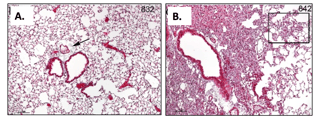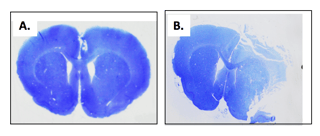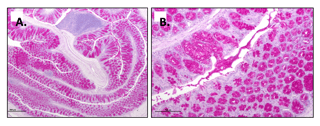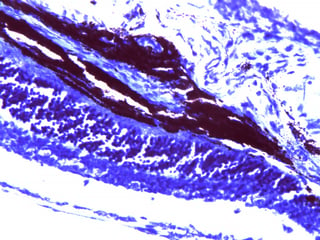Histochemistry Staining Methods
We offer histochemistry staining that may be performed on paraffin embedded tissue section or frozen tissue sections. And our scientists are highly experienced in histochemical staining. Below is a sampling of the types of staining methods we perform:
Hematoxylin and Eosin (H&E) staining: This is a classic standard tissue section staining method widely used for the inspection of tissue components for pathological analysis that’s applicable in all organs and disease models. Our scientists are well-versed in this method, based on binding of nucleic acid and other acidic components of the tissue to the basic hematoxylin stain. The acidic counter stain, eosin, binds to basic components in the tissue, such as cytoplasmic proteins.

H&E staining in sections of: A) Skin B) Spinal cord C) Paw
Masson Trichrome (MT) staining: This method is mainly used to distinguish collagen from muscle tissue, applicable and recommended in fibrosis models, wound healing studies, infarct models and others.

Masson Trichrome staining in lung sections of Bleomycin-induced lung fibrosis:
A) Control group B) Bleomycin- induced group
Thionine staining: This method is used for staining of brain sections and visualizing macroscopic lesions, e.g. following MCA occlusion.

Thionine staining in brain sections A) Naïve B) Post MCAo - Stroke model
PAS
Periodic acid–Schiff (PAS) staining: This method is used for staining of polysaccharides such as glycogen, and mucosubstances such as glycoproteins, glycolipids and mucins in tissues e.g. colon tissues from TNBS-induced colitis model.

TBS
Toluidine blue staining: This method is used for staining of mast cells that are found in the connective tissue and their cytoplasm contains granules composed of heparin and histamine. Following Toluidine staining, mast cells are stained red-purple and the background is stained blue.

- Biotechnology company. East coast, United States